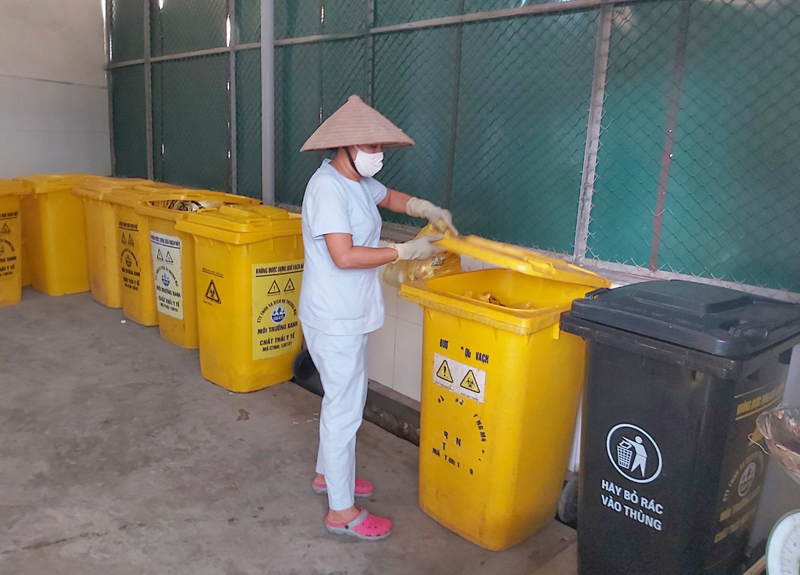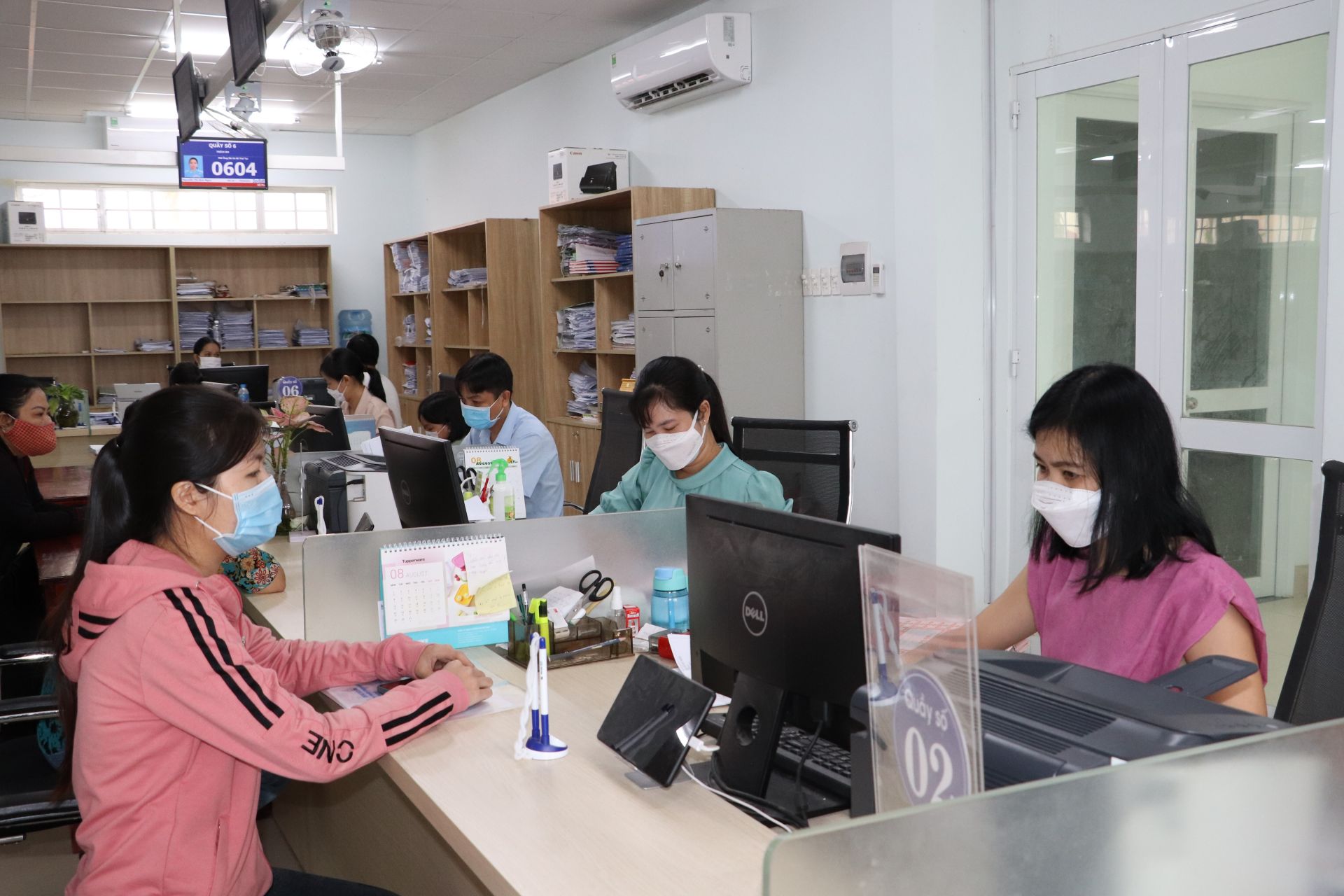Health-care waste classification in Vietnam
What are the regulations on the health-care waste classification in Vietnam? - Hoang Phuong (HCMC)

Health-care waste classification in Vietnam (Internet image)
Regarding this issue, LawNet would like to answer as follows:
1. Health-care waste classification in Vietnam
According to Clauses 1, 2 and 3, Article 4 of Circular 20/2021/TT-BYT, hazardous health-care waste includes infectious waste and non-infectious hazardous waste.
* Infectious waste includes:
- Infectious sharps waste: needles, syringes with needles, intravenous line (IV) cannulas, puncture needles, acupuncture needles; scalpel blades, surgical nails, saws; used and disposed syringes, glass sharps, sharp objects, that is contaminated with or contains the human blood or pathogenic microorganisms;
- Infectious non-sharps waste: cottons, bandages, gauzes, gloves, and other non-sharp wastes that is not contaminated with or contains blood or pathogenic microorganisms; discarded inactivated vaccine or attenuated vaccine bottles; infectious liquid waste (includes drainage fluid after surgery or medical procedures and fluid waste that contains human blood or pathogenic microorganisms);
- Highly infectious waste: specimens, tools that contain specimens, wastes that contain discarded specimens from BSL-2 laboratories equivalent (biosafety level 2) or above; waste from isolation rooms, isolation wards, sampling areas for patients who have dangerous infectious diseases of group A and group B;
- Surgery waste: tissues, discarded human parts, and experimental animal carcasses;
* Non-infectious hazardous waste includes:
- Discarded chemicals with ingredients and properties exceeding the hazardous waste threshold or with hazard warnings on their labels;
- Discarded pharmaceutical products falling under the cytotoxicity category or with hazard warnings on their labels;
- Medicine or chemical bottles and jars, other tools that contain medicine or chemical in the cytotoxicity category; or bottles that have hazard warnings on their labels;
- Discarded used broken medical equipment which contains mercury, Cadmium (Cd); discarded batteries; discarded lead-coated materials used in radiation shielding;
- X-Ray film developer solutions, wastewater from testing and analysis equipment, and discarded fluids with hazardous elements exceeding the hazardous waste threshold;
- Other health-care wastes that have ingredients and properties exceeding the hazardous waste threshold or have hazard warnings on their labels;
2. Health-care waste segregation in Vietnam
Health-care waste segregation in Vietnam according to Article 6 of Circular 20/2021/TT-BYT is as follows:
* Rules of health-care waste segregation:
- Health-care wastes shall be segregated at the point and time of generation;
- Each type of health-care waste shall be separately segregated into the packaging, tools, and equipment as prescribed in Article 5 of this Circular. In case the hazardous health-care wastes do not react with each other and are treated with the same method, segregate them into one containing packaging, tool, equipment (excluding infectious sharps waste);
- In case the infectious wastes are mixed with other wastes, collect, store, and treat them as infectious wastes and keep handling them as after-treatment wastes.
* Placing of segregation tools and packaging:
- At faculties, departments, divisions: the storage tools, packaging, and equipment shall be placed appropriately and safely;
- At the place where the storage tools, packaging, and equipment are placed, there shall be an instruction for segregation and collection of waste.
* Infectious wastes segregation:
- Infectious sharps waste: put in the yellow puncture-proof trash can or container;
- Infectious non-sharps waste: put in the yellow lined trash can;
- Highly infectious waste: put in the yellow lined trash can;
- Surgery waste: double-bagged or put in the yellow lined trash can;
- Liquid infectious waste: put in a sealed bag or in a storage tool with a sealed lid.
* Non-infectious hazardous waste segregation:
- Non-infectious hazardous wastes shall be segregated by hazardous waste code to be stored in appropriate packaging, tools, and equipment. Hazardous wastes that share the same properties; do not react with each other and treated with the same method; may be segregated in the same packaging, tool, equipment;
- Non-infectious hazardous solid wastes: put in black bags, trash cans, or lined trash cans;
- Non-infectious hazardous liquid waste: put in storage tools with a sealed lid.
* Other ordinary solid waste segregation:
- Non-recyclable ordinary wastes: put in blue bags, trash cans, or lined trash cans. Sharps shall be put in puncture-proof trash cans;
- Recyclable ordinary waste: put in blue bags, trash cans, or lined trash cans.
* Non-hazardous liquid waste: put in labeled storage tools with a sealed lid.
- Key word:
- health-care
- health-care waste
- in Vietnam
- Cases of land rent exemption and reduction under the latest regulations in Vietnam
- Economic infrastructure and social infrastructure system in Thu Duc City, Ho Chi Minh City
- Regulations on ordination with foreign elements in religious organizations in Vietnam
- Increase land compensation prices in Vietnam from January 1, 2026
- Determination of land compensation levels for damage during land requisition process in Vietnam
- Who is permitted to purchase social housing according to latest regulations in Vietnam?
-

- Emergency response and search and rescue organizations ...
- 10:29, 11/09/2024
-

- Handling of the acceptance results of ministerial ...
- 09:30, 11/09/2024
-

- Guidance on unexploded ordnance investigation ...
- 18:30, 09/09/2024
-

- Sources of the National database on construction ...
- 16:37, 09/09/2024
-

- General regulations on the implementation of administrative ...
- 11:30, 09/09/2024
-

- Notable new policies of Vietnam effective as of ...
- 16:26, 11/04/2025
-
.Medium.png)
- Notable documents of Vietnam in the previous week ...
- 16:21, 11/04/2025
-
.Medium.png)
- Notable documents of Vietnam in the previous week ...
- 16:11, 02/04/2025
-
.Medium.png)
- Notable new policies of Vietnam to be effective ...
- 16:04, 02/04/2025
-
.Medium.png)
- Notable new policies of Vietnam effective from ...
- 14:51, 21/03/2025

 Article table of contents
Article table of contents
